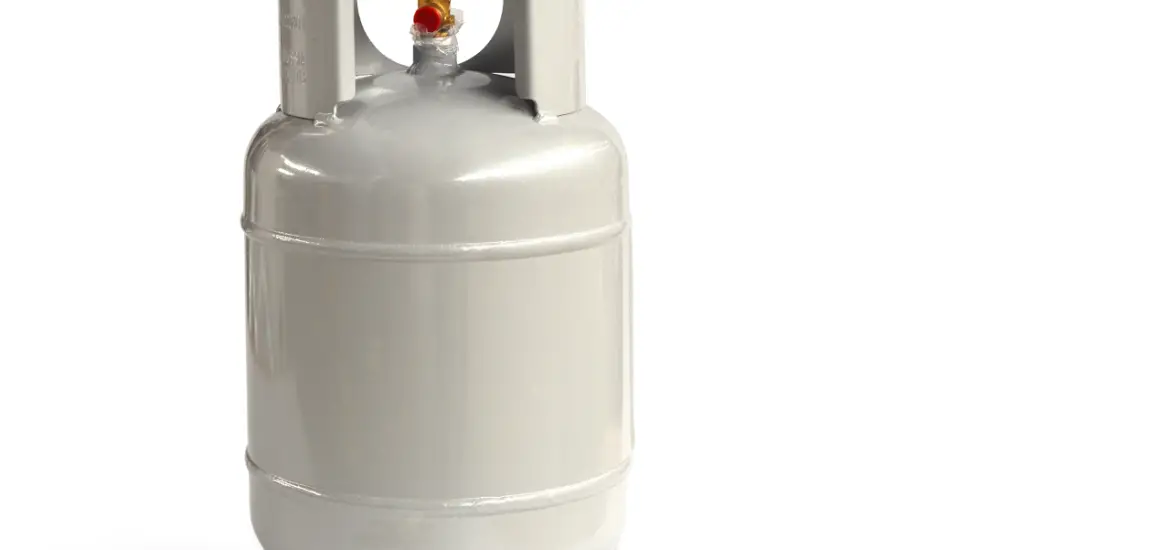RS-44b refrigerant is the cool cousin of the refrigerant family, taking the stage as the replacement for R22 in many HVAC systems. Why, you ask? Well, it’s all due to R22’s naughty behavior, meddling with the ozone layer.

Table of Contents
Introduction to RS-44b Refrigerant
What is RS-44b?
So, what exactly is this RS-44b refrigerant? Imagine a refrigerant that’s safer for Mother Earth, efficient, and perfect for that old HVAC system of yours. That’s RS-44b for you!
The Basic Properties of RS-44b
RS-44b’s all about compatibility and performance. It’s similar to R22, but with a few tweaks to make it better and safer. How cool is that?
Environmental Impact of RS-44b
Here’s the juicy part. RS-44b refrigerant’s got a way smaller ozone depletion potential than R22. It’s like choosing a hybrid car over a gas guzzler. Now, that’s something to feel good about, right?
The Use of RS-44b in HVAC Systems
From your home’s air conditioning to commercial chillers, RS-44b’s got it all covered. It’s a like-for-like substitute for R22, making it the easiest switch you’ll ever make.
The Difference Between RS-44b and R22
Comparative Chemical Properties
Now let’s play scientist for a minute. RS-44b’s chemical makeup is slightly different from R22’s, allowing it to work well with existing systems while being safer for the environment. It’s like tweaking a recipe to make it healthier but still delicious!
Environmental Impact Comparison
So, R22 is a known ozone layer villain, right? RS-44b refrigerant, on the other hand, is way less harmful. It’s like choosing paper over plastic!
Efficiency Differences
RS-44b doesn’t just match R22’s efficiency – it surpasses it. Imagine getting more cooling for the same cost – sweet, isn’t it?
Understanding RS-44b Refrigerant in Detail
The Chemical Composition of RS-44b
Basic Chemical Components
RS-44b’s a blend of hydrofluorocarbons, like R22, but with a different mix. Think of it as a refreshing new cocktail that’s also good for the environment.
How the Composition Affects Performance
That unique blend of RS-44b? It boosts performance and efficiency while being kinder to our ozone layer. It’s like the superhero of coolants!
Safety Measures for Using RS-44b
Handling and Storage
Handling RS-44b refrigerant is pretty straightforward – treat it like you would any other refrigerant. Storage? Keep it sealed, upright, and away from flames. Kinda like a fine bottle of wine, you know?
Disposal Considerations
RS-44b should be disposed of responsibly, just like other refrigerants. Always remember, being eco-friendly is cool!
First Aid Measures
If you get into a sticky situation with RS-44b, treat it like any other chemical exposure. Flush, breathe, rest, and seek help. Easy, right?
Read more detailed articles on refrigerants here – Articles on Refrigerants: The Ultimate Guide to Understanding Them
The Application and Use of RS-44b Refrigerant
Installation Process for RS-44b
So, you’re looking to install RS-44b in your HVAC system? Good choice! It might be a tad more complex than changing a light bulb, but with the right guidance, it’s a manageable task.
Step by Step Guide to Installation
Before you dive in, you need to have the right tools and safety gear. Goggles, gloves, and a refrigeration manifold gauge set are key. Now, let’s walk through the steps together:
- Recovery of the Old Refrigerant: Start by connecting your refrigerant recovery system to the HVAC system. This should safely remove any existing R22 or other refrigerant in the system. Keep in mind, venting refrigerants directly to the atmosphere is a big no-no.
- Checking for Leaks: After recovery, it’s time to check for leaks. You can use a leak detector for this. Any leak found should be fixed before proceeding. Makes sense, right? No point filling up a leaky system.
- Vacuuming the System: Once the leaks are fixed, vacuum the system. This removes any air or moisture that can compromise the efficiency of the system or damage it over time. You wouldn’t want that, would you?
- Installing RS-44b: Now comes the main event – installing RS-44b. Using your refrigeration manifold gauge set, connect the RS-44b canister to the system and allow the refrigerant to flow in. Easy, right? It’s like filling up your car with gas.
- Checking the System: Once filled, check the system for leaks again. Run the system and monitor the gauges to ensure the system pressure is right and that the cooling effect is as expected. Job done!
Remember, this guide is a basic walkthrough. Always follow the manufacturer’s instructions and local laws, and if you’re not comfortable doing it yourself, hire a professional. They’ve got this down to a science!
Precautions During Installation
Just remember, safety first! Don’t vent it to the atmosphere and make sure you’re all geared up. Like a responsible DIY champ, right?
Maintenance and Servicing of RS-44b Systems
Regular Maintenance Tasks
Just like your car, your HVAC system needs regular check-ups. Keep an eye out, and RS-44b will keep doing its thing.
Regulatory Landscape Around RS-44b
Current Global Regulations Pertaining to RS-44b
United States Regulations
The US is all in for RS-44b, given its eco-friendly profile. Because who doesn’t love Mother Earth, right?
European Union Regulations
The EU’s got its thumbs up for RS-44b too. Because who wants a hot summer without guilt-free cooling?
Other Major Global Regulations
Across the globe, it’s the same story. RS-44b’s the choice for a greener tomorrow. You’re part of that, aren’t you?
The Future of RS-44b in Light of Regulatory Trends
Anticipated Regulatory Changes
With the global focus on reducing emissions, we expect to see more thumbs-up for RS-44b. Are you ready for a cooler, greener future?
What These Changes Mean for RS-44b Users
More acceptance of RS-44b means easier access and fewer restrictions. Cool, isn’t it?
Conclusion
Summing up RS-44b as a Refrigerant Choice
So, RS-44b? It’s all about performance, compatibility, and loving the environment. Ready to make the switch?
Future Outlook for RS-44b
With more folks realizing the benefits of RS-44b, we see a cool, green future ahead. Excited yet?